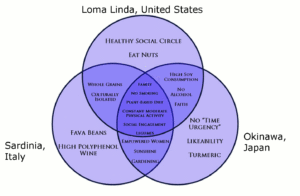At the Raúl Blanco Cervantes Geriatric Hospital, the elderly seem to defy the cycle of life. As they live more healthy and, as result, longer than the rest of the population. The Nicoya Peninsula, where the geriatric hospital is, qualifies as one of the seven blue zones over the globe.
¿What are blue zones you wonder? The Blue zone is a concept born out of demographic studies made by Gianni Pes and Michel Poulin. Together, they discovered that lifestyles affect directly on the longevity of a population. Therefore, areas where communities live in a family, don’t smoke, eat well and exercise tend to age better than those that don’t.
Costa Rica is part of a select group, Italy, Sweden, Greece, Japan and the US have blue zones. Living longer means healthier, and Nicoya’s geriatric hospital is a true testament to that statement. By 2009, the number of elderly persons over 100 years in the zone was over 900 Costa Ricans.

¿Eternal youth or old country?
While longevity may mean health and, in consequence, it makes a better living, experts say that the country is growing too old. For them, it demonstrates that Costa Rica is no longer living a demographic transition. “The country is gradually getting older”, affirmed Fernando Morales Martínez, Director of the Raúl Blanco Cervantes Geriatric Hospital.
Life expectancy has grown over the last 40 years, only half of the Costa Rican population reached 80. Now that number is up to almost 70%. According to the national report about elderly health, their numbers elevated too rapidly. Morales Martínez warns that the local government is not adapting to these demographic changes.
Studies on national population say that in 2050 people over 100 years could raise up to 8,000. That’s over 3,000% more than 17 years ago, on the other end, the ten-year-old population could diminish up to 22%. At that same year, 30-year-olds could languish a little over 20%.
The key to everlasting youth
Regarding the Nicoya Geriatric Hospital, Fernando Morales announced a research that starts in February. The objective is studying from a clinic point of view, the population that lives in the Costa Rican blue zone. “We’re trying to clarify why these persons live so long. We know about some findings that the Keller research made, it told us about centenary people that live in Nicoya.”
According to Morales, some of the discoveries made up until today say that Nicoyans live longer because of their DNA’s. People’s telomeres – a DNA region – length determine the youth of cells, in other words, the longer the telomeres, the longer we live.
But to Morales, this isn’t the key to youth, he says genetics only count as 20% of all historic data. The other 80% is not yet discovered, that’s the purpose of their research.
“We want a deep study on this, at a first stage, we’ll take samples, make clinical exams and check clinic histories. After analyzing all data thoroughly, conclusive results could come, our plan is looking beyond social and demographic phenomena”, commented Morales.
Morales has made the first approach in December and a second one is scheduled for February and March. He plans another stage in his study where the main Metropolitan area is considered. Therefore, he wants to contribute to local health policies in benefit to the community.
Nicoya’s Geriatric, where people live on
Just last October, Raúl Blanco Cervantes Geriatric Hospital had its 40th anniversary. During that time, histories of the elderly live on forever, making their memories last for decades. The hospital’s message always is against discrimination and abandon of older persons, they believe that quality of life should last until the final rest comes.
Nicoya’s Geriatric works as a specialized center that offers attention to elder persons from 60-year-olds onward. They receive people from different areas of Costa Rica. In its initial stages, it worked as a National Hospital for Tuberculosis.
Its opening was in 1958 as a hospital that attended the pulmonary disease. In 1975 the hospital got renamed to Dr. Raúl Blanco Cervantes Hospital and got conducted by Costa Rican Social Security. In July 1977, as a result of the hospital’s personnel efforts, the “Geriatric Day Hospital” began its official history. Now, it’s one of the integral components of the national program to attend the elderly in Costa Rica.
In September 1991, the Costa Rican Social Security service declared Nicoya’s Geriatric a National Geriatric. The following year, a postgraduate on Geriatrics and Medical Specialties started in the University of Costa Rica. Later that decade, the nation’s congress passed a law to protect elders.
In December 2008, the hospital got the designation as a collaborating center for the World Health Organization. This recognition is currently effective since October 2012.
Both youth and age give hope, hope of what comes and what once was. We have to value growing generations as much as the future ones because future is only worth it if we know where we come from. That’s the real value of Nicoya’s Geriatric Hospital, where age means future.
